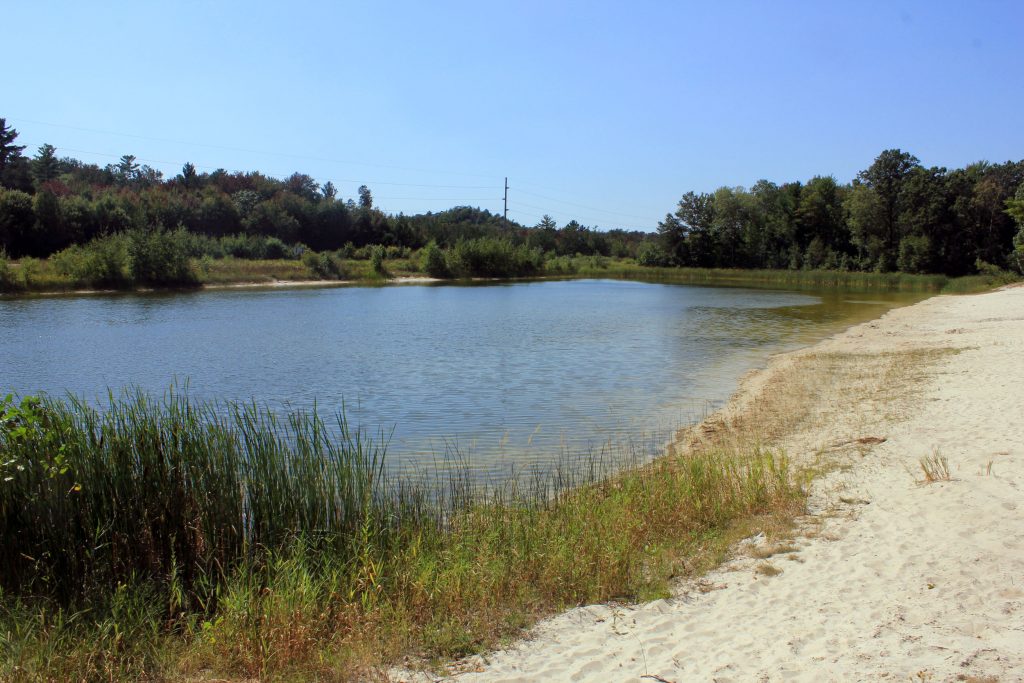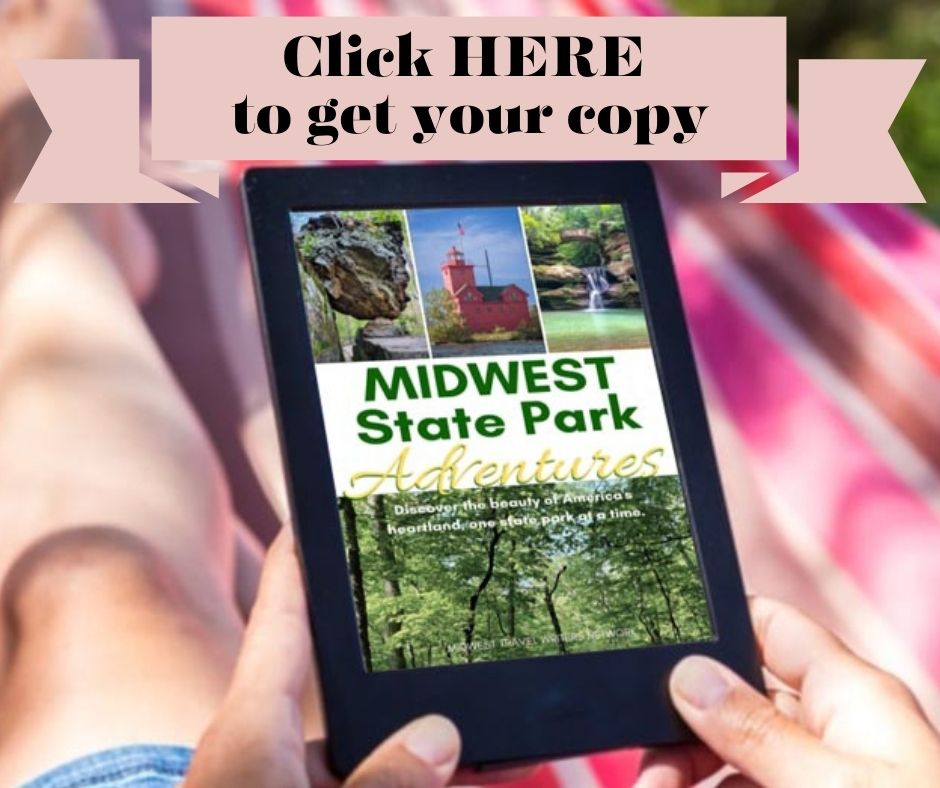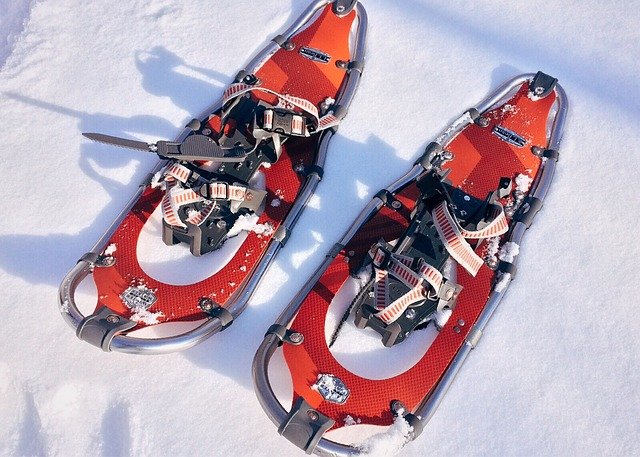
Complete Guide to Mill Bluff State Park
We may earn money or products from the companies mentioned in this post.
Mill Bluff State Park is located near Camp Douglas (in Juneau and Monroe Counties) and contains numerous steep bluffs that stand tall among other exciting physical natural features. These bluffs used to be landmarks for people passing through the county during the 1850s.

A visit to this place would not be complete without hiking to the top of the bluffs to get a sweeping view of the surrounding landscape and the horizon.
Complete Guide to Mill Bluff State Park
This guide acts as a directive to enable you to have an amazing time when visiting Mill Bluff.
History of the Bluffs in Mill Bluff State Park
The bluffs in this park were formed when massive sandstone from the Ice Age glacier melting over 10,000 years ago became eroded over time. These bluffs create an amazing scene as they rise above the plain ground among a dense hardwood forest. Most are between 80 feet and 200 feet high. The bluffs are located in what is called the driftless area. These bluffs were formed during the last glaciation stage that happened in Wisconsin.
The Wisconsin River spread out near Wisconsin Dells to form Lake Wisconsin. This glacial covered most parts of Juneau, Monroe, Adams, and other neighboring counties, including the Mill Bluff area.
The sides of these bluffs became eroded by wave action over time. The flat-topped bluffs weathered this erosion because the top was composed of a more resistant form of sandstone.
These glacial features are protected inside the forest because of their unique nature. Climbing on or defacing these bluffs in any way is prohibited. The tall ones were used by settlers traveling through the state as landmarks.
There are several tall and easily recognized bluffs in the park. These include:
- Wildcat bluff -140 feet tall
- Mill Bluff -120 feet tall
- Long Bluff -199 feet tall
- Camel Bluff -170 feet tall
- Bee Bluff -60 feet tall
- Ragged Rock Bluff -80 feet tall
You will come across plaques explaining the locations of these bluffs once you are inside the park.
Mill Bluff State Park Dam
The dam inside Mill Bluff State Park has a nice beach that attracts all levels of swimmers. No fishing is allowed here. There are no lifeguards on duty and children must be under the supervision of an adult at all times.
The pond inside the park covers an approximated 2.5 acres. The water comes from underground springs. Changings stalls are available close to the pond. No motorized boating activity is allowed on the dam.
Mill Bluff Summit Deck
The observation point at the summit deck offers you one of the best views of Mill Bluff State Park. You will feel as if you are towering above the tall pine trees. There are plaques with information that gives you a glimpse into the history of the park.
To get here, you will climb a series of staircases that start easy but become smaller and steeper as you get close to the summit.
Mill Bluff State Park Camping
First of all, there is no camping all year – they have a limited season: from May to September. The park simply isn’t staffed much the rest of the year and weather conditions make it a little tough.
There are 21 campgrounds on Mill Bluff State Park. Only 6 of these campgrounds are connected to electricity. The rest of the campgrounds offer primitive camping options.
Amenities you can find in these campgrounds include vault toilets, showers, picnic areas, and playgrounds. You can reserve any of these campsites online through the Wisconsin Park reservation system.

Other camping options close to the park:
If you do not get a reservation in Mill Bluff State Park, you can still explore what the park has to offer from the comfort of other campgrounds close to the park.
Aster Place
This campground is perfect for large crowds and large families. It offers lush and spacious grounds for both RV and primitive tent camping options. Your pet is also welcome here. Campfires are allowed but within a controlled environment. Other amenities available include Wi-Fi, toilets, and potable water.
Glacier Ridge Organics
The 35-acre farm is surrounded by lush pine vegetation that attracts people who love primitive camping. The campsites are small and not ideal for RV camping. There are no dump stations here and electrical hookups are far from the main campsites.
Amenities available in this campground include a shower house, potable water, a bunkhouse, picnic tables, Wi-Fi, and laundry services. Campfires are allowed. Pets are allowed as well.

Mill Bluff State Park Activities
Part of the Ice Age National Scientific Reserve, Mill Bluff State Park offers a spectacular view of picturesque rock formations. Campsites, picnic areas, a shelter, hiking trails, and a swimming pond can all be found at this park just outside Camp Douglas.
Mill Bluff Water Sports
A pond with 2.5 acres of clear cool water from underground springs and 250 feet of white sand beach is available for public swimming. While changing stalls are available, lifeguards are not.

We put together a Wisconsin State Parks Bucket List Free Printable for you – to keep track of all the state parks and nature areas you visit. Get it here:
Crazy Camping Girl FREE Wisconsin State Parks Bucket ListDownload
Mill Bluff State Park Fishing
FYI: No fishing or pets are allowed in the pond.

Hiking at Mill Bluff State Park
Hiking is the most popular activity inside this park. You will be walking among scenic bluffs that seem to grow like pine shoots against a relatively plain ground.
The park has erected observation decks in strategic places to offer visitors the perfect views while hiking inside the park. Most of the sections you will come across are not developed and although there are not many miles to explore, you will still have a great time hiking here. There are two main trails here; the Mills bluff trail and the Camels bluff loop.
Camels Bluff Loop
Length: 1.25 mile
This is a lightly trafficked trail that gives you the chance to see wild animals and birds inside the Mills Bluff State Park. You will also be hiking on the base of many of the bluffs you come across inside the park.
Start the hike near Camp Douglas and be on the lookout for the branching trail that takes you to the top of the bluff. It is relatively steep but perfect for a nice afternoon stroll. Hikers of any skill level can explore this trail easily.
The traffic noise from the highway close to this trail may be a bother to some people but if you ignore this, you will enjoy the wonderful views you get with every step you take. Be on the lookout for bugs on the grassy section while hiking this trail, especially if you will be visiting the park in the summer season.
During the winter, the trail is quiet and with very little traffic. You may not be allowed to park inside during winter but you can park outside and take a self-guided stroll if the snow is not too restricting. The park is never closed during the offseason even if access to the campgrounds is limited.

Mill Bluff Summit
You will come across the staircase that takes you to the top of the Mill bluff at the end of this loop. There are 223 stairs to climb and although this may seem like a workout session, the view from the top of the bluff will be rewarding and worth the climb. There is an observation deck on the north end that offers an excellent view of the park and the surrounding area.

Mill Bluff Nature and Vegetation
If you stand on top of Mill Bluff, you will notice an open land before you get to the Long Bluff. This used to be a cranberry marsh. Cranberry farming was an important activity in this region years ago. The farmers used to sell these cranberries to Milwaukee and Madison from Camp Douglas by rail.
The western side of the park is hot and dry. Here, you are likely to find hognose snakes and Jackpine trees. Hognose snakes are harmless to human beings but if you come across one do not disturb them. Remember that they are in this natural environment. The Jackpine trees need hot places for their cones to release seeds.
The eastern side is moist and you will find Oak, maple, and ferns growing wildly here. The soil on this side of the park can retain moisture because this side is sheltered from the western winds and heat. You will find many small animals here. Oak and pine trees are the predominant tree species in the park.
Mill Bluff State Park Bicycling
No motorized vehicles are allowed in the park. There are no bike trails in the park as well. Cycling lovers can explore the 15-mile stretch that begins at the park and ends in Camp Douglas by following the Omaha bike trail. From the Omaha bike trail, you can decide to either connect to the 400 State trail in Elroy or join the Elroy-Sparta State Trail.
Picnic Inside Mill Bluff State Park
The picnic shelter at Mills Bluff State Park was a project of the Works Progress Administration. The picnic shelter inside the park lies at the base of a large outcropping rock. You can climb to the top of the outcrop to have a sweeping view of the surrounding.
The shelter has a shingled roof with a low stone wall. This shelter is the perfect place to hold a social function for up to 20 guests. It has a large stone chimney on one end and the other end has been left open. Grill area, seating area, tables, and garbage bins have been provided for people using the shelter.
There is electricity in the shelter. The shelter is offered on a first-come, first-served basis. If you want to reserve the shelter in advance, you can do so between May and September. Pets are not allowed into the shelter or the adjacent picnic area.
Mill Bluff State Park Hunting
Hunting and trapping are allowed in open areas in the park. You should adhere to Wisconsin State Park hunting and trapping rules and regulations and check the hunting calendar before visiting the park.
There are restrictions on the type of traps you can use within this property. You are also not allowed to hunt within 100 yards of any designated public use area, including all the hiking trails.
- Click here to view the map of the hunting and trapping area within Mill Bluff State Park.
- Click here to see Wisconsin State Parks hunting and trapping rules and regulations.
In Mill Bluff State Park, turkey and small game hunting occur from November 1st to November 14th. You should liaise with the park’s office to see if they have any changes or requirements during this season.
Mill Bluff State Park in Winter
A visit in the winter is a little different than the summer but all the more adventurous. Activities range from snowshoeing, cross country skiing, to hiking. You need to know that the park is NOT staffed during the winter and that the trails are not groomed.

Mill Bluff State Park Snowshoeing and Cross-country Skiing
Not all trails are ideal for snowshoeing or cross country skiing. You will receive information about which trails would be ideal for exploration from the park’s office. Otherwise, stick to the trails you are familiar with for safety reasons.
As I mentioned, the trails do not get groomed in the off-season. If you are an experienced snowshoer, you will find the trails inside this park ideal for this activity during the winter season.
Mill Bluff State Park and Dogs
Let’s start with the obvious: dogs shouldn’t be left unattended and you should pick up the poop. Waste should be disposed of in dumpsters or trash receptacles. Dogs are allowed in most campgrounds, trails, roads, and outlying areas of the parks. They must be on a leash no longer than 8 feet at all times, if they are not under control at all times, they can be seized and subject to local laws on stray animals.
ID tags are a good idea if your dog isn’t microchipped. If you do lose your pet you can contact the Douglas County Humane Society at (715)-398-6784.
Rabies could be a thing as there are wild animals like raccoons your pooch could come in contact with so make sure your pooch has all current vaccinations.
Other animals like deer, chipmunks, squirrels, gray wolves, skunks, fishers, elk, and porcupines can be found there.
Pets are not allowed in the following places:
- Buildings
- Picnic areas and picnic shelters
- Main Beach
- Playgrounds
- Marked Nature Trails
No Pets are allowed on the ski trails when they are snow-covered.
Of course, if your dog is a service animal, those rules do not apply.

Attractions near Mill Bluff State Park and Camp Douglas
Other attractions you might be interested in seeing once you are in Mill Bluff State Park or near Camp Douglas include;
Wisconsin National Guard Museum
This is a small museum but it has some of the best collections of world war fighter jets and canons in the US. Some of the legendary pieces you will find here include an F-4 Phantom jet, an M-3 33mm anti-tank gun, and an M-48 Patton tank among a collection of thousands of different guns and war items.
Target Bluff German Haus Shops
If you love shopping, you will enjoy the dining and shopping experience in the Target Bluff German Haus Shops. There are more than 50 artisans and vendors of unique merchandise here. They sell everything from handmade jewelry, vintage furniture, rugs, glassware, and other products. You can find a nice little restaurant to enjoy whatever dining experience you wish, exotic or local.

Mill Bluff State Park Address and Open Hours
From the 1-90, turn onto Exit 55 near Camp Douglas. Drive west for 3 miles on U-22. This will take you right to the park’s entrance.
The park is open all year long from 6 am to 11 pm. seasonal camping opens from May to September. During the off-season, camping is not allowed but visitors can take a hike inside the park. Parking is not accessible during this time. You would have to park outside and walk into the park.
Not all hiking trails will be accessible during this time. You should inquire about these trails from the park’s office before visiting during the off-season. You need a sticker for your car while camping inside this park.
Places To Stay Nearby
Other articles you may find helpful:
- Tips for Cold Weather Camping
- Camping in Bad Weather: Tips for Staying Safe, Dry, and (Mostly) Sane
- Free Car Camping: Guide to the Best Spots
- Campfire Cooking With Kids: A Recipe for Learning, Laughing, and Lifetime Memories
- Best Camping Lighter: Top Picks for 2025
